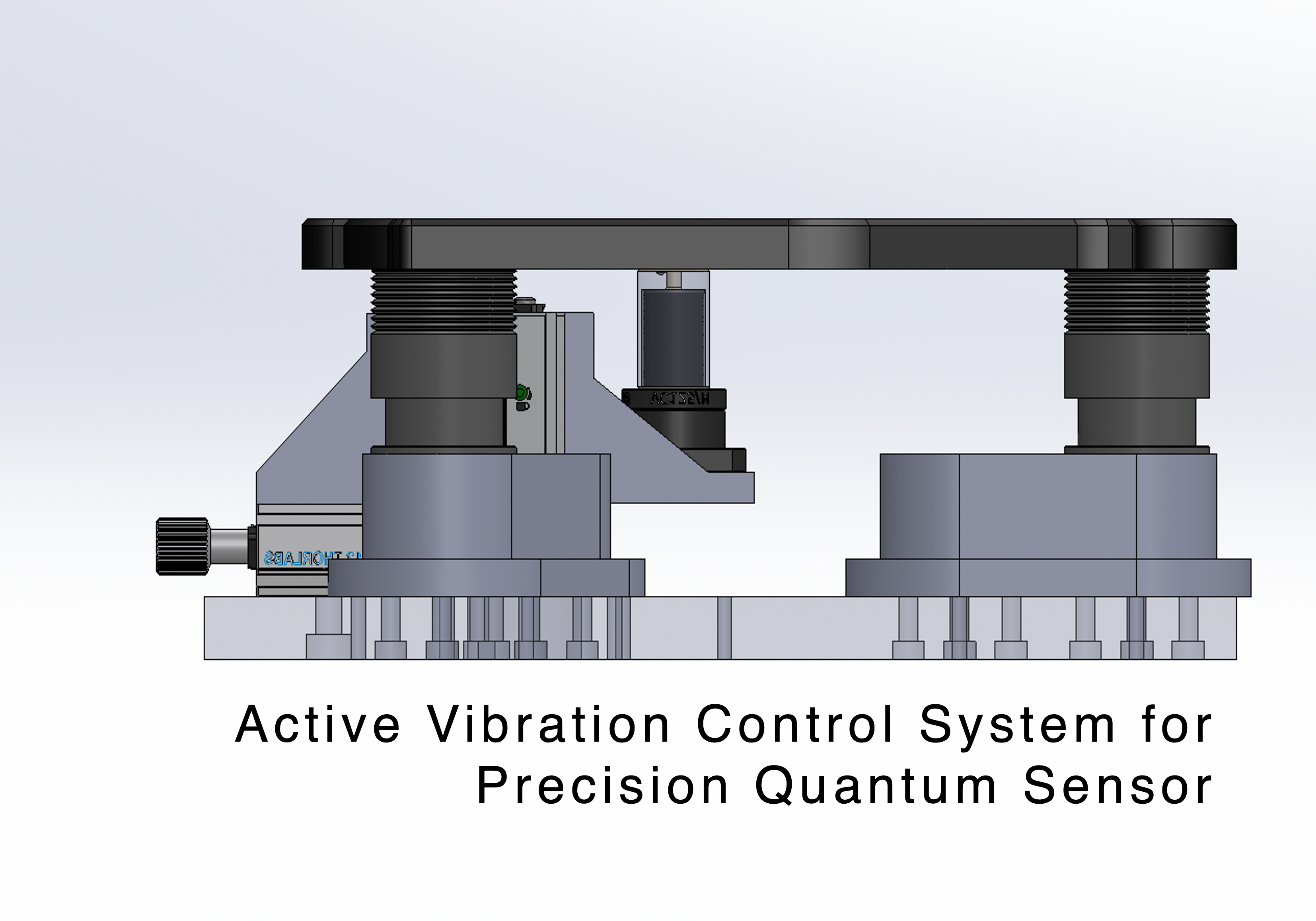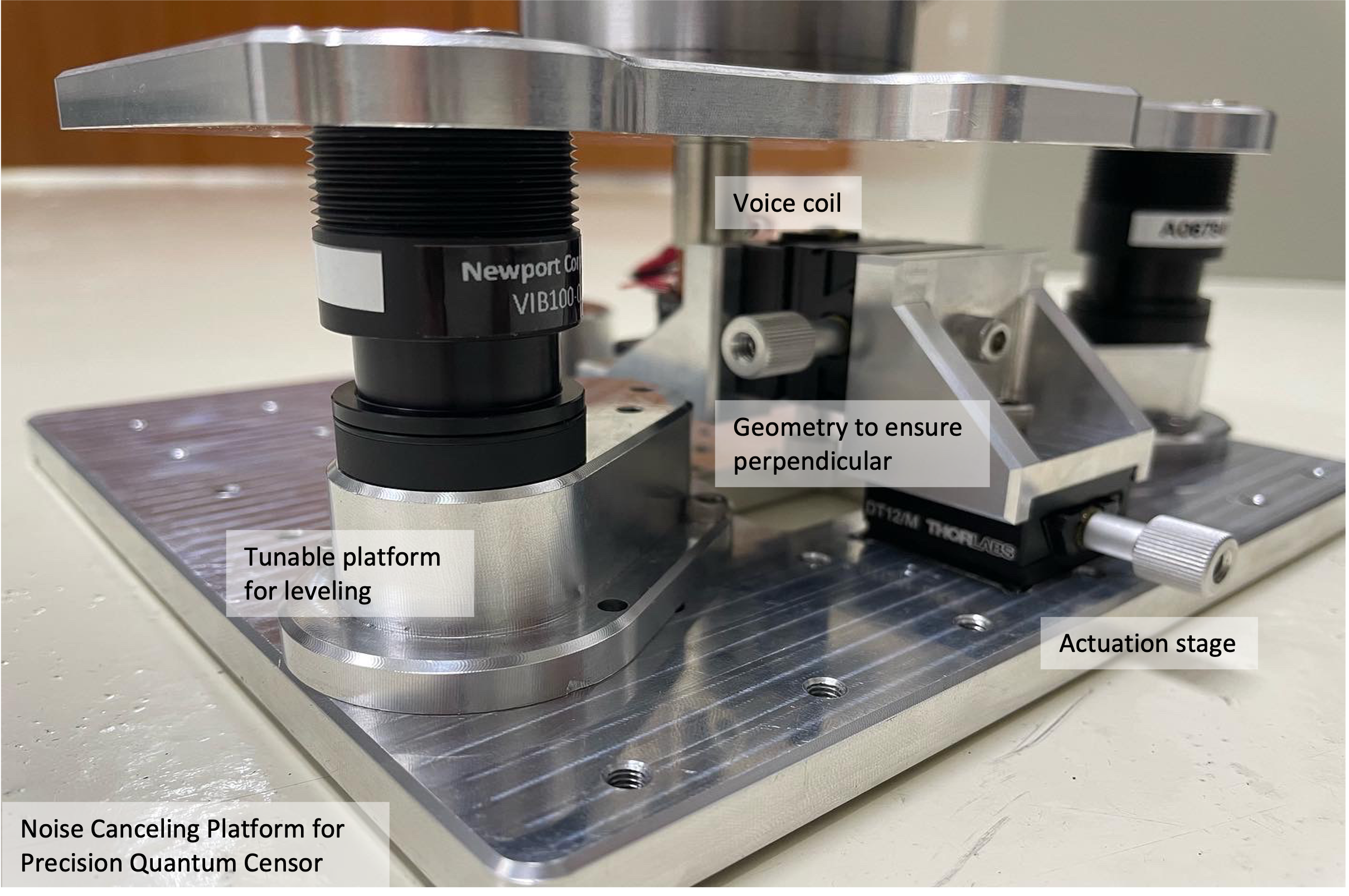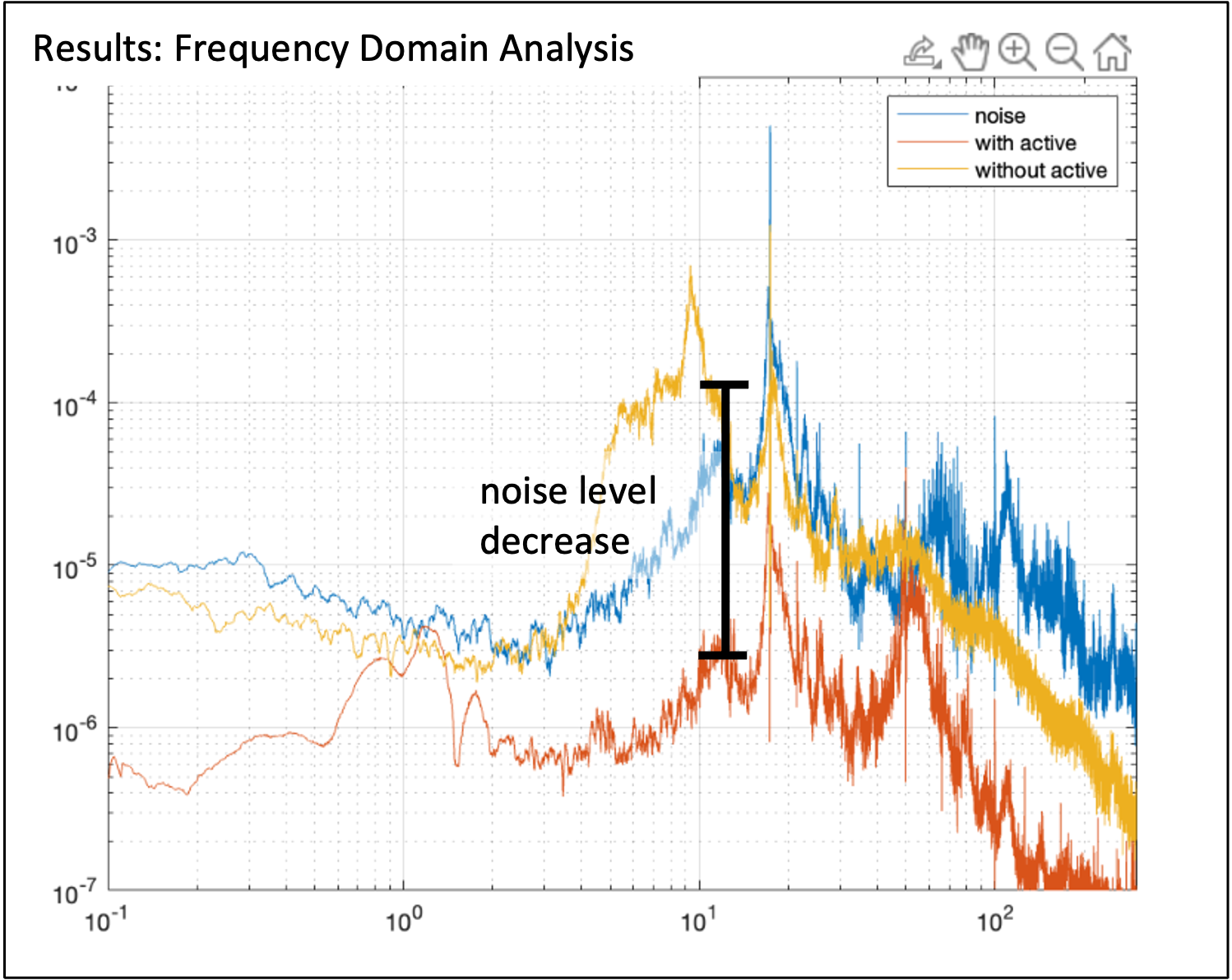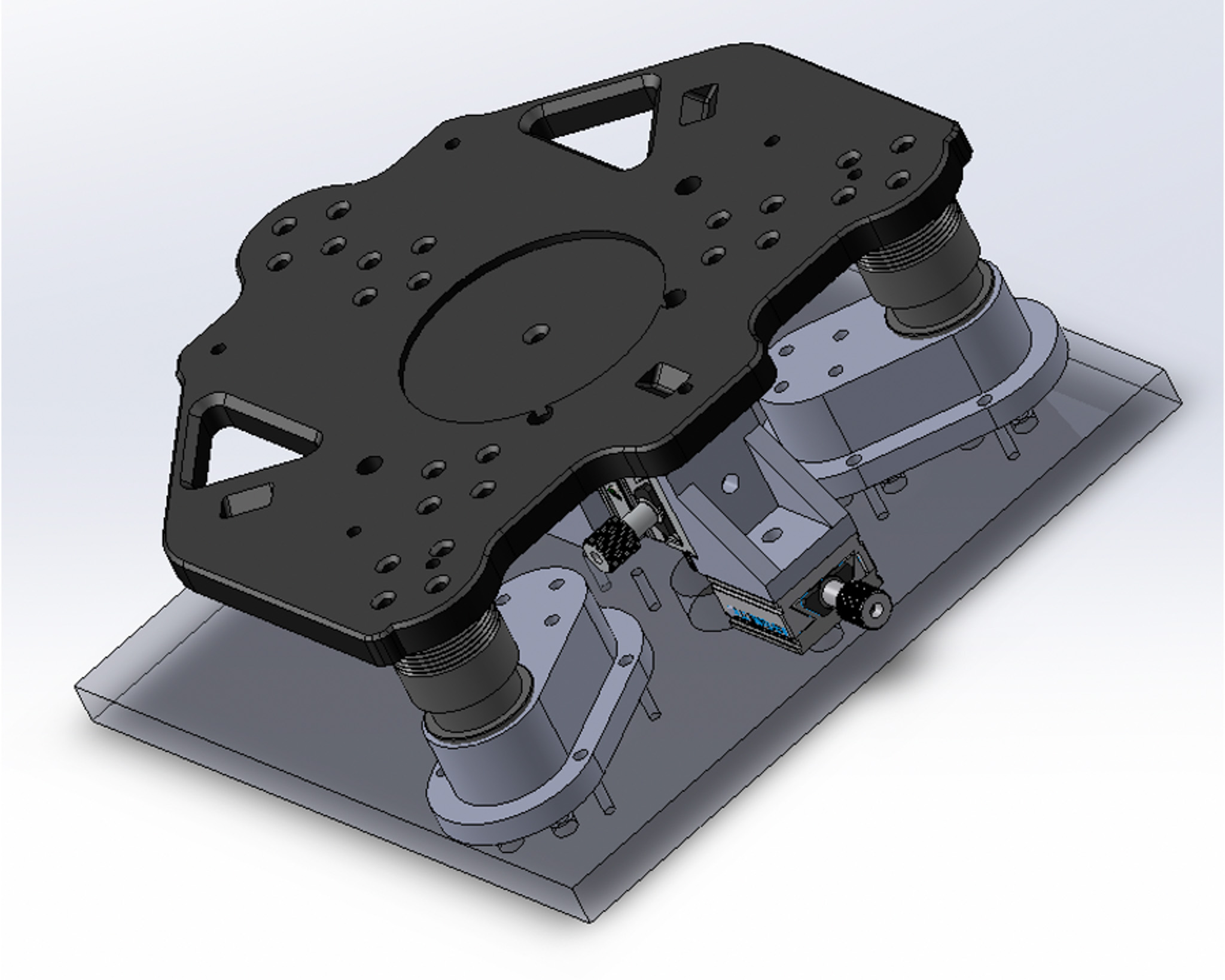Active Vibration Control System for Precision Quantum Sensor
Atomionics Pte. Singapore, May 2022 - Aug. 2022

Internship Project
Control/ProductDesign/Physics
I designed an active feedback loop for a startup working on accurate gravity data acquisition. The device I built lowered the noise by 30x and will be integrated into the next version of the product.
Skills
- SolidWorks
- MATLAB/Simulink
- System Identification
- Physical System Analysis
Problem Statement
Atomionics is a mid-sized Singaporean startup using quantum sensors for gravitational data to explore underground.
However, their sensor had excessive noise, partially due to vibrations that affected the gravity measurements. I was tasked with determining whether a noise-cancellation system could improve the data and implementing a solution.
Results
This vibration isolation platform reduced force attenuation from 1×10-5 to 3×10-7 m/s2, decreasing noise from ground and acoustic vibrations. In drive tests, the platform continued functioning after an impact over 90% of the time. Even after substantial impacts, fine-tuning restored performance within 1 minute. The platform exhibited minimal flexing and tilting, verified through laser alignment and the tunable sliding system. Using this damping platform, I confirmed the company could collect gravity data with uncertainty reduced by an order of magnitude.
Video: Noise Level Damped when System Activated
(Green line: Noise level, each grid is 0.001m/s2)
Video: Soleniod Actuation Stage at Resonance
Progress and Gallery
This project requires analyzing the quantum system and how the external noise will influence the measuring results. I simulated the system with external disturbance under different profiles and quantified the result uncertainty levels to do this. From this, I deduce the system required to filter out the noise and approach the problem from a product design perspective to design a robust system. These are the steps and the design decisions I made:
- Varifying noise source and contribution
I collected background noise, performed simulations on different noises, and incorporated the quantum detection scheme. It is shown that more than 80% of the noise of our data is from the ground vibration noise.Simulation of different close-loop attenuation profile is done to decide how good the attenuation need to be. - Design requirements and decisions
Besides the attenuation profile, other design requirements are considered. The device has to be portable, impact-withstanding, and has a low deflection angle for the mirror mounted on it. A voice coil actuation schematic is selected to implement a low-lag feedback loop. The voice coil is fine-tunable by optics stages. Slots are implemented to allow individual movement of the supporting springs to ensure flatness. - Control scheme
The noise bottlenecks are strict in order to achieve the accuracy I want. A mix of high-frequency DAQ hardware and precise current amplifiers is selected. The control system incorporates frequency domain and lead-lag controller design. All the hardware and plants are modeled on Matlab and implemented through Lua scripts.



